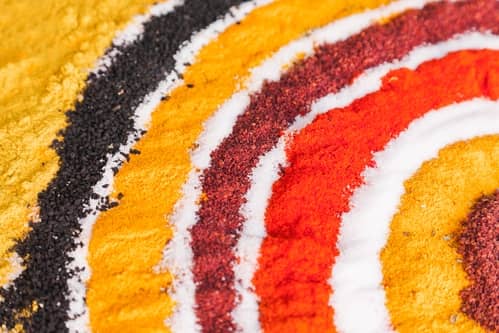
Have you ever wondered why certain colors make you feel calm while others energize you? The colors around us do more than just decorate our spaces—they can influence our emotions, cognitive abilities, and even physical strength. From ancient healing practices to modern scientific research, color psychology reveals how hues like blue, red, and pink subtly shape our behavior and well-being. Could a simple color change be the key to better sleep, sharper focus, or even greater success?
Key Takeaways
-
Blue is not just soothing—it can improve self-confidence, reduce stress, enhance cognitive function, and even help you sleep better.
-
Pink has a tranquilizing effect, which is why it is used in holding cells to calm aggressive behavior, while red can increase anxiety but also boost performance in competitive sports.
-
The colors in our environment impact our behavior, from influencing purchasing decisions in retail spaces to affecting test performance and reaction times.
Can a Simple Color Choice Change Your Life?
If you have difficulty concentrating, lack self-confidence, or don’t sleep well. . or if you want to be more creative, take more risks or even improve your physical strength…there may be a simple answer that you’d never imagine.
It was practiced as a healing therapy in ancient Egypt, Greece, China, and India. Interior designers have long used it to influence mood. Modern researchers are studying its effect on mental functioning.
Colors have profound effects on us, physically, mentally, and emotionally. These effects occur at a subconscious level where we’re not aware of them.
Although associated with negativity, blue can increase self-confidence, cut stress, boost happiness, and give us sharper minds. Blue is soothing and comforting.
In Japan, railway companies have reportedly reduced the suicide rate by installing blue lighting at stations, and blue lights were introduced along a stretch of busy roads to reduce the number of accidents. In neighborhoods lit up in blue the number of crimes decreased by 9%.
It’s America’s favorite color for a reason
Those sleep best who sleep in a blue-colored bedroom, according to one study, and wake up feeling happy and positive. Meanwhile, those who sleep in a purple bedroom, which is a stimulating color, get the poorest night’s sleep. Purple left them feeling tired in the morning.
Canadian researchers found that being surrounded by blue is best for tasks requiring creativity, imagination, and risk-taking.
Recently, researchers found that blue-enriched white lighting in offices had beneficial effects on alertness, mood, performance, and eyestrain, as well as on the quality and duration of nighttime sleep.
It’s no wonder that blue is by far the favorite color chosen by Americans.
Pink: It’s not just for girls anymore
Unlike blue, pink light has a tranquilizing effect, calming people down within minutes. Pink holding cells are now widely used to reduce violent and aggressive behavior among prisoners. According to one jail official, “the calming influence of pink reduced altercations in the cell by 30 – 40%.” Pink has also been shown to reduce physical strength whereas bright colors increase it.
People feel more comfortable in blue and green retail environments – and will therefore stay longer and spend more. But they will tend to eat more and leave more quickly in fast food restaurants that are decorated in red, orange, and yellow. That may be desirable from the restaurant’s standpoint. They want to turn over the tables as many times as possible during the lunch and dinner rush.
Red for winning in sports, but not for taking the SAT
You may not be surprised to learn that red is stimulating, exciting, and passionate. That’s how it’s always been perceived. However, red can also make you feel more anxious. Participants exposed to red, compared to other colors, were less likely to take risks and performed worse in puzzle-solving and IQ tests.
Red seems to have negative implications for achievement outcomes, but wearing red gives you an advantage in competitive sports. Wearing red (as well as black) clothing can make you look more attractive to others.
Most of the studies on color have focused on blue and red. However, all colors are likely to have specific effects on us. We’ll have to wait for the results of further research to find out.
In the meantime, if you want to decorate your home, buy some new clothes, sharpen your mind, or get a better night’s sleep, you might want to look at colors with a whole new set of eyes.
Summary
Colors influence us in ways we often don’t realize, affecting our emotions, mental performance, and even physical abilities. Blue has been linked to increased confidence, reduced stress, and better sleep, while pink has a calming effect, making it useful in prisons and hospitals. On the other hand, red can heighten anxiety but also give athletes a competitive edge. Research shows that our surroundings, including the colors we wear and live in, play a significant role in our daily experiences. Whether you’re looking to boost creativity, improve focus, or simply get a better night’s rest, understanding color psychology may be the key to unlocking hidden potential.
Frequently Asked Questions
How does blue affect the brain and body?
Blue has been shown to reduce stress, improve cognitive function, and enhance sleep quality, making it a preferred color for bedrooms and workplaces.
Why is pink used in prisons and hospitals?
Pink has a tranquilizing effect that helps reduce aggression and anxiety, which is why it’s often used in holding cells and healthcare settings.
Does the color red always have a negative effect?
Not necessarily—while red can increase anxiety and reduce test performance, it can also enhance physical performance and attractiveness, making it beneficial in sports and social settings.
Can the color of my bedroom really affect my sleep?
Yes, studies show that people who sleep in blue-colored rooms tend to sleep better and wake up feeling more refreshed, while purple can overstimulate the brain and reduce sleep quality.
How do businesses use color psychology?
Retailers use colors strategically—blue and green create a comfortable shopping environment, while red, yellow, and orange encourage faster turnover in fast-food restaurants.
- Macrae, F. (2009, January 5). Feeling blue? Good news - it's the colour of happiness. Daily Mail.
- McCann, J. (2013, May 16). Want a good night's sleep? Find out which colours you should use in the bedroom (and avoid) for a decent kip. Daily Mail.
- http://seattletimes.com/html/nationworld/2008494010_bluelight11.html
- Spottiswoode, J. (2013, September 11). Pink prisons in Switzerland to calm inmates. Daily Mail.
- Elliot, A. J., Maier, M. A., Moller, A. C., Friedman, R., & Meinhardt, J. (2007). Color and psychological functioning: the effect of red on performance attainment. Journal of experimental psychology. General, 136(1), 154–168.
